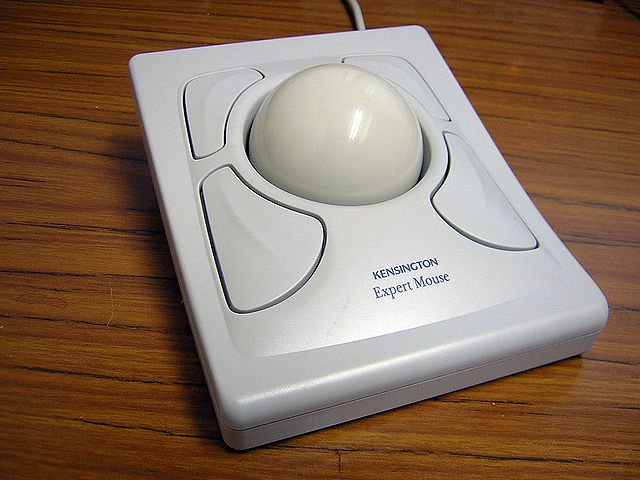Trackball
pointing device From Wikipedia, the free encyclopedia
Remove ads
In computing, a trackball is a pointing input device. It consists of a ball held by a socket containing sensors to detect a rotation of the ball about two axes. It is like an upside-down mouse with a ball that sticks out. The user rolls the ball with the thumb, fingers or the palm of the hand to move a cursor and can click one of two buttons (identical to mouse buttons) near the trackball to select desktop objects or position the cursor for text entry. Currently only three major companies: Logitech, A4Tech and Kensington make many of them. Microsoft was once a major producer.

Large trackballs are sometimes seen on computerized special-purpose workstations, such as the radar consoles in an air traffic control room, or sonar equipment on a ship or submarine, or computer-aided design. Potentiometers capture the trackball orientation.
Many notebook and laptop computers in the late 20th century used a small trackball. It was usually located in front of the keyboard toward the user. IBM's ThinkPad series of notebook computers use a "pointing stick", called a TrackPoint, that is integrated into the middle of the keyboard keys.
Remove ads
Wikiwand - on
Seamless Wikipedia browsing. On steroids.
Remove ads
